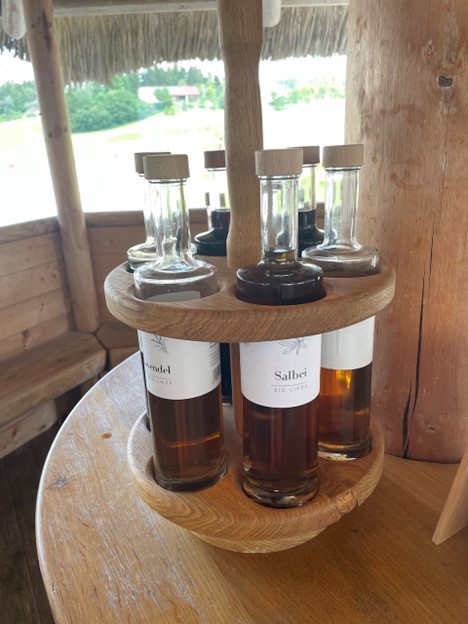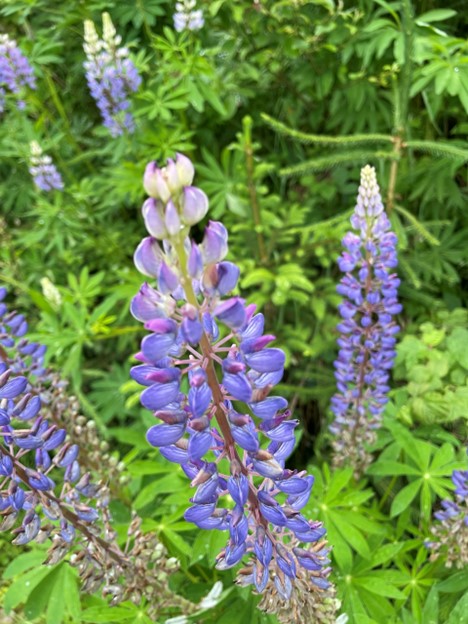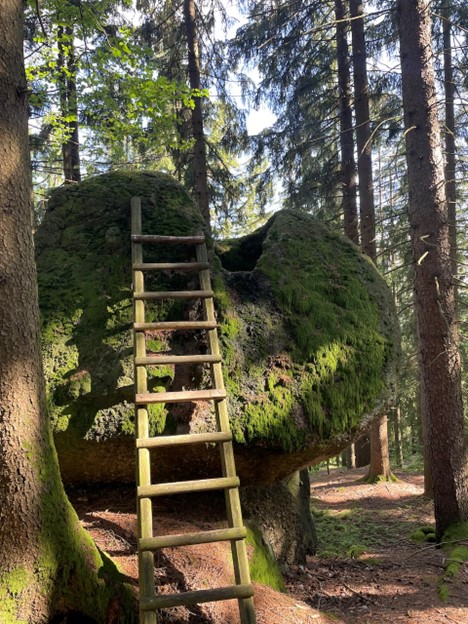Democracy or Dictatorship: Holiness or Sin?
Humans developed cities (called polis, pura, burg, etc.), gaining the status of city states, advancing into nation states, and creating civilization (urbanization, from civitas, city, pyramidal system with five calamities). States developed the status of leadership of statemen or politicians, making democracies or dictatorships. Politics inwardly was originally for citizens, but declined for politicians, and outwardly tend to competition and even destruction and annihilation.
Statehood is essentially selfish, deriving from the individuals’ selfishness, discriminating against others, even destroying other selves, states, and systems, including the whole life system, as we see in wars, ecological crises, and even nuclear holocaust. This selfishness is more conspicuous in dictatorship states than democratic ones, even though dictatorial tendencies are observable in any so-called democratic states by corruption and conspiracies with power politics and profits.
The solution of the selfishness of the selves and states lies in everyone’s awakening to one’s karma with the triple poisons and cultivation in the universal Dharma of Dependent Co-origination, i.e., all are interdependently co-originated, thus all are interrelated and interinfluenced. When we all observe the Dharma (truth/ethic), we can solve individual, social, and environmental problems in the five blisses of awakening, freedom, holiness, love, and peace.
We must shift from karma to Dharma, ego to eco, sin (separated sickness) to holiness (wholly wholesomeness), an unnatural, uni-directional pyramidal civilization to a natural, cyclical life Indra-net culture, regional ethic to global ethic, nationalism to globalism, etc. We should not allow anyone to violate the Dharma, global ethic (based on the Five Precepts, Ten Commandments), and become a dictator or a pseudo-dictator, violating the public peace, truth, and trust.
July 6, 2024 C.E.
Note:
- Dharma means 1. form (from d-harm: phenomenon) and 2. norm (from d-h-arm: norm: law operating through phenomena: ethic), and 3. the teaching of the law of all phenomena, that is, Dependent Co-origination (originally awakened on the origination of perception/consciousness depending on the sense organs and objects, but later applied to all phenomena, cf. note 2). This law is similar to the law of causality, now used by sciences, but deeper and wider, applied beyond objects – more on subjects and symbols – ideas, etc.).
- “The Dharma (Norm/Law/Truth/Ethic) of all dharmas (forms/phenomena/ truths/ethics)” is Dependent Co-origination, i.e., all phenomena are interdependently co-originated on limitless causes and conditions (similar to the Law of Causality, but deeper and wider – beyond conventions, conceptions, objects, etc.). This means that we are interrelated with other beings (other species, elements, stars, etc.), and relatives to each other, and that we must therefore live together harmoniously and strive to make a wholly wholesome world to become harmonious, healthy, and happy.
- Ernst Cassirer defined humans as homo symbolicum in his Philosophy of Symbolism, its summary An Essay on Man, where humans are described as skillful in handling the symbolisms of language, myth, religion, art, science, history, etc. The Myth of the State is an important work that to shows how states operate and how people are misled to wars and even nuclear demise.
- A paradigm shift from our artificial, unilateral pyramidal civilization to a natural, cyclical Indra-net life culture for sharing life, heart, and harmony with the five blisses (awakening, freedom, equality, friendship, and peace) is essential to solve the global problematique. Culture is the cultivation of our potential in truth, goodness, beauty, and holiness (cf. sciences, philosophies, arts, and religions).
Please refer to the following for more detailed explanation:
- The solution to the global problematique requires the global ethic (issued by the Parliament of the World’s Religions in Chicago in 1993 with more than seven thousand people from all religions and from all over the world attending), which is based on the Five Precepts (and the fundamental common elements in the Ten Precepts, the Ten Commandments, etc.).
- Karma is instilled with the triple poisons of desire, divisiveness, and delusion (of ego/mei: I/my). The Buddha said that all living beings are karma-birthed, -heirs, -owners, -machines, and -refuged. He clarified that there is no self-substance with self-sameness (permanent) and self-sovereignty (wishful) entities due to the Dharma (Truth/Law) of all dharmas (phenomena), Dependent Co-origination. We as karma-machines must change to the Dharma-refuged in order to change the world in suffering to that of one in holiness (wholly wholesome: harmonious, healthy, and happy).
- To reunite with the holiness of the limitless ocean of life from being a separated small bubble or foam of ego or group ego is the goal of anyone or a universal religion, where one lives as a true friend in need of all, as expressed in Mitra, Mithra, Metteya, Maitreya, Mazda, Massiah, etc., and who lives in limitless life, light, liberation, and love.
- We must abolish a system that allows one or a few to use nuclear bombs to devastate the whole world, even to the point of destroying the total global system, together with the nationalism, nukes, war, dictatorship, discrimination, and dogmatism that make it possible.
民主主義か独裁主義か:聖か罪か?
人間達は(ポリス、プラ、ブルグなどと呼ばれる)都市を発展させ、都市国家としての地位を得、国民国家へ進み、文明(都市化:キビタス都市に由来する:五禍を持つ金字塔組織)を創り出した。国家は政治家或いは政治屋の指導者の地位を発展させ、民主主義と独裁主義を作り出した。政治は内部的には、本来は市民の為であったが、政治屋の為に退化し、外部的には競争、更には破壊や破滅に向かいがちである。
国家様式は本質的に個人の利己主義に由来して利己主義であり、他者を差別し、私達は戦争、生態危機や、核ホロコーストにさえ見るように、他の自己、国家、組織を破壊さえする。この利己主義は民主主義国家よりも独裁主義国家に顕著であるが、いかなる所謂民主主義国家においても、堕落、力の政治や利益との共謀による独裁主義的傾向はみられる。
自己と国家の利己主義の解決は三毒を持つ自らの業に目覚め、一切は相依縁起し、それ故すべては相互関連し相互影響するという縁起の法における修養にある。私達皆が法(真理・倫理)に従う時には、覚醒、自由、聖性、愛情、平和の五福の中に個人、社会、環境の問題を解くことが出来る。
私達は業から法、エゴからエコ、罪(分離病患)から
聖(全体健全)、不自然で遺志彷徨的金字塔文明から自然的で循環的な命帝網文化へ、地域倫理から地球倫理、国家主義から地球主義などへ転換しなければならない。私達は誰も法、(五戒、十戒に基づく)地球倫理を犯し、公共平和、真理、信託に違反して独裁者や疑似独裁者になることを許してはならない。
2024共通年7月6日
註:
1.法(dharma)は 形態(form: d-harmより: 現象:真理)、2.規則(norm: d-h-armより:現象中の規則:倫理)、3.諸法の法、縁起(元来は感覚器官と感覚対象に依る知覚・意識の発生に覚醒したが後に一切現象に適用されたもの。註2参照)。この法則は、現今諸科学に用いられる、因果律と同様であるが、もっと深く広い-客体を越えて主体と観念などの象徴に適用される。
2.諸法(形態・現象)の法(規則・法則・真理・倫理)は縁起(因縁生起)、即ち、一切現象は無量の直接原因と間接条件により相依生起するということである(因果則に似ているがさらに深く広い-世俗、観念、対象などを超える)。これは私達が他者(多種、要素、星宿など)と相依関係にあることを意味し、相互に相対的であり、私達が調和、健康、幸福になる為には共に調和して生き、全体健全な世界を作る努力をしなければならないことを意味する。
3.エルンスト・カッシラーは人間を言語、神話、宗教、芸術、科学、歴史などの象徴を巧く操るものであるとする「象徴の哲学」やその要約である「人間」等で「象徴人間」と定義しました。「国家の神話」は諸国家がどのように機能するかそしてどのように人々が戦争やさらには核の破滅に誤り導かれるかを知るのに重要である。
4.私達の人工的で一方向の金字塔文明から命・心・和の分かち合いによる五福(覚醒、自由、平等、友情、平和)をもつ自然的で循環的な命帝網文化への枠組転換が地球問題群を解決する為には必須である。文化は私達の真善美聖(参考:諸科学、諸哲学、諸芸術、諸宗教)における潜在能力を修養することである。
詳細説明は下記を参照:
5.地球問題群は(1993年シカゴで世界中から諸宗教の七千人を超える人々が集まった世界宗教会議により発出された)地球倫理を必要とするが、これは五戒(と仏教他の十戒の基本的共通要素)に基づいたものである。
6.業は貪瞋(エゴ/メイ:我/我所の)痴の三毒が植え込まれている。ブッダ(覚者)は一切衆生は業—誕生者、—相続者、—所有者、—機械、—依拠者であると言った。彼は、諸法(現象)の法(真理/倫理)である縁起の故に自己同一(永住)と自己主宰(意欲通り)の実態をもった自己物質は存在しないことを明らかにした。業—機械である私達は、苦しむ世界を聖(全体健全:調和、健康、幸福)なる世界に変える為には、法₋依拠者にならなければならない。
7.エゴや集団エゴの分離狭小の泡沫あるいは泡群から無限の命の大洋に再結合することは誰もあるいは普遍宗教の目標です、そこでは無量寿、無量光、無量解放、無量愛を生きる友・友情(Mitra, Mithra, Metteya, Maitreya, Mazda, Massiah)で表される一切の必要の時の真の友として生きるのである。
8.私達は一人や少数の人が、国家主義、核、戦争、独裁、佐s別、独断をもって、全世界を破壊し、全地球系を破滅させるに至る極点にも到る核爆弾の使用を可能にするような事を許してはならない。
.
.
.
.
.
.
.
.
.
.
.
.
.
.
.






































































